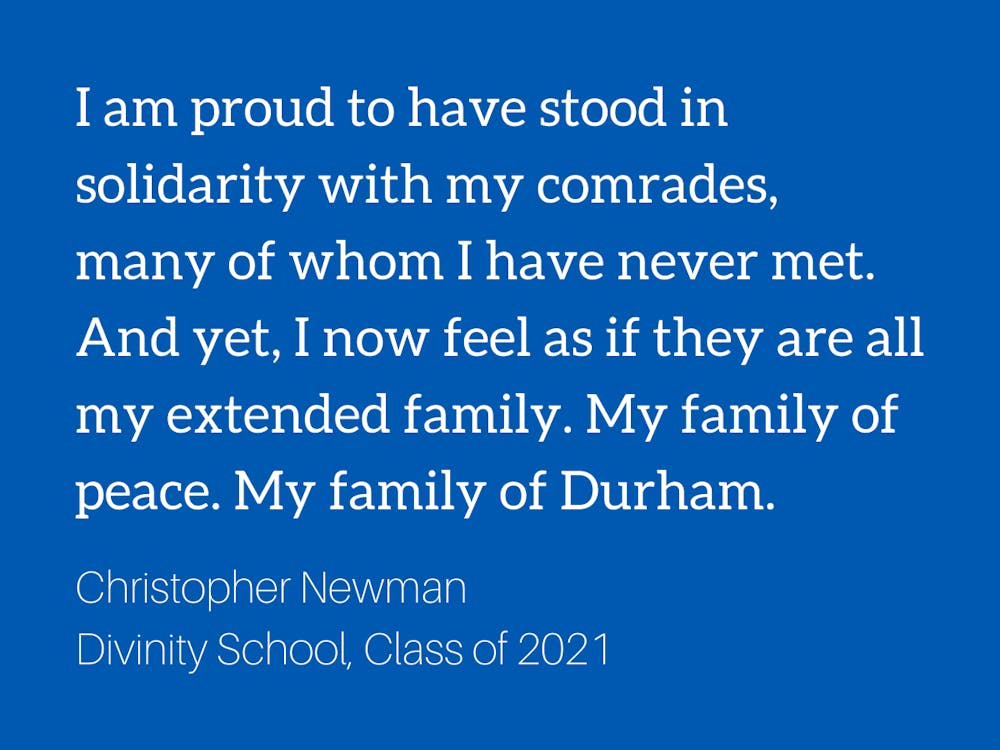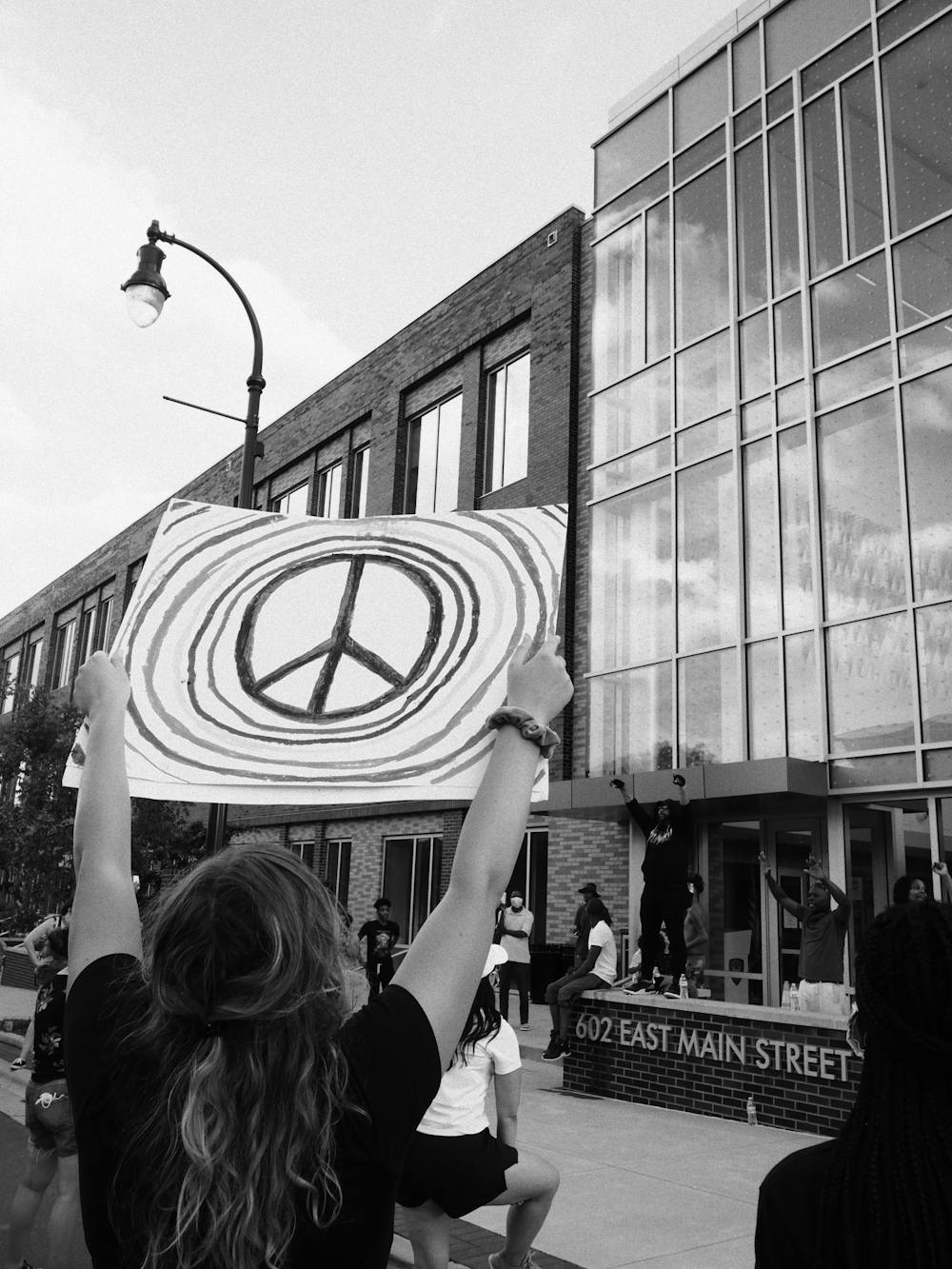As I stood atop the grey slab of concrete in front of the Durham County Police Station, I raised my right hand in the air, stretched my finger out, and scanning the massive crowd of onlookers, I declared, “It is, Just Us!” In unison, each voice loudly repeated, “It is, Just Us!” The strands of “No Justice, No Peace” had run its course. It had been declared. Now, I felt a new, declarative chant must be thrown into the universe.
“It is, Just Us!”
As a thirty-nine-year-old Black community organizer, social activist and educator, along with being a graduate student at Duke Divinity School, I have been involved in more than my fair share of protests over the years. A native of Columbus, Ohio, I have been on the front lines of community outrage at the systemic racism which permeates within and throughout various American police departments, where anti-Black violence has historically lacked sufficient and appropriate justice. And it is because of this that so many exhausted, disconcerted, and frustrated persons, both Black and White, have erupted in a heartbreaking yet beautiful exhibition of protest.
The justice which so many have called for has yet to be received. And so, the sentiment of “it is just us” resonates with a people whose communities have for so long been the victims of a country which has allowed for systemic racial violence to continue.
The Durham protests brought together people within our community of various races, genders, ethnicities, cultures and ages. The Durham protests stood in solidarity with those around the country who have declared they can no longer bear witness to anti-Black violence, particularly by various police departments and a criminal justice system which has failed to hold police fully accountable for their negligent and fatal actions. Moreover, the Durham protests served as a reminder that communities are not as fractured as one might assume, as standing next to a young White college student was an older Black woman, or walking beside a Black father with his three young sons was a Native American woman.
The voices of the Durham protests called for peace. And their faces bore the deep scars of pain all too familiar to some, not fully understood by others. Yet within the prism of misunderstanding came time to reconcile, to explain and to listen. Various members of the Durham community spoke, outwardly decrying anti-Black violence, while sharing their own stories of not only what it means to be Black in America, but to be White, male or female, young or old. The signs, each written with a different message, all spoke the same language. The language of peace. And it was because of these things, because of these people, because of us, that we assembled in a showing of love and grief to express that love and grief while a nation is plunged yet again into despair and confusion.
And while the police presence was a constant reminder that any contrary actions could be met with force, composure was kept and thus, the police either stood by or sat in their cruisers, respectfully allowing for all of us to release our tensions, even if for a brief moment in time.
No one knows where this will end, how it will end or if it will end at all. We all would like to hope it will, and soon. Yet the tragic reality is that it may not. However, as the Durham protests proved, voices united will rise to declare hope for the hopeless, and demonstrate peace for those so broken by the lack of it. I am proud to have stood in solidarity with my comrades, many of whom I have never met. And yet, I now feel as if they are all my extended family. My family of peace. My family of Durham.
Get The Chronicle straight to your inbox
Signup for our weekly newsletter. Cancel at any time.


